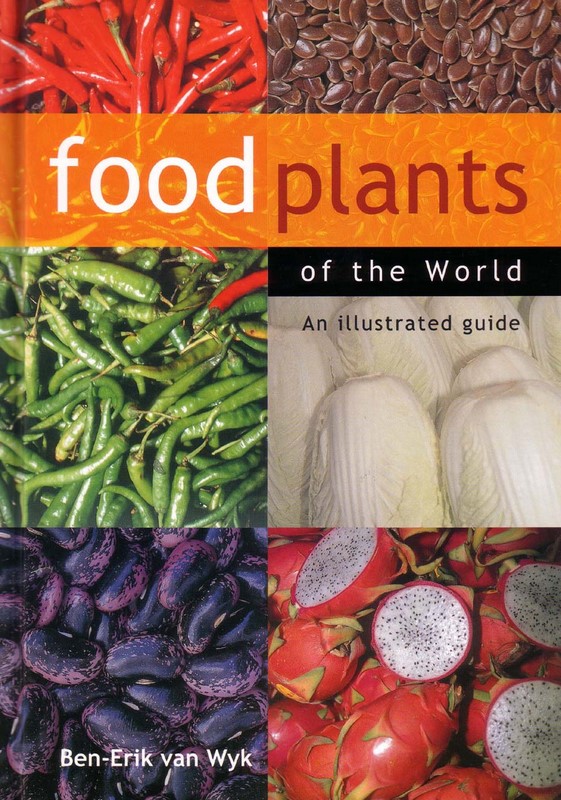|
Read 12912314 times
Connect me to:
|
Food Plants of the Worldby: Ben-Erik van Wyk
Portland OR:
Timber Press 2005, $39.95, Hardbound
ISBN: 978-0-88192-743-6
Reviewed by: Jacqueline M. Newman
Summer Volume: 2006 Issue: 13(2) page(s): 38
 This comprehensive collection, written by a professor of botany at the University of Johannesburg in South Africa, overviews more than three hundred eighty plants. It describes them and their close relatives detailing a total of more than eight hundred well-known food plants. They are listed alphabetically by botanical name, give their common name or names, family names, region of origin, some historical background, the parts of the plants used, a tiny bit about cultivation and harvesting, main uses and properties, and their nutritional value. Then at the very bottom of the page, the food's name is given in several languages. This comprehensive collection, written by a professor of botany at the University of Johannesburg in South Africa, overviews more than three hundred eighty plants. It describes them and their close relatives detailing a total of more than eight hundred well-known food plants. They are listed alphabetically by botanical name, give their common name or names, family names, region of origin, some historical background, the parts of the plants used, a tiny bit about cultivation and harvesting, main uses and properties, and their nutritional value. Then at the very bottom of the page, the food's name is given in several languages.
Before the individual food items, there are three pages about regions of origin followed by the food categories of: Cereals; Pulses (legumes); Nuts and Seeds; Fruits; Vegetables; Culinary Herbs; Sugars, Gums, Gels, and Starches; and Spices and Flavours. Each provides a long alphabetical list of just their common names followed by the botanical ones. These large boxes are loaded with dozens upon dozens of common foods grouped in sets reminding the reader as to how diverse the food supply really is. After them, are the individual food plants, every one with three or four great color photographs. An example of their detail can be seen illustrating the article titled Durian: Daring to Eat this Noisome Delicacy in this very issue of Flavor and Fortune. At the end of the book, nearly one hundred pages discuss nutrients, diets, and health; special biologically active compounds; a thirty-six-page table called Quick Guide to Commercialized Food Plants; giving region of origin, edible parts, and nutritional values. After that, a five-page glossary, two sections recommending further reading and acknowledgments, and thirty-one pages with a four-column very carefully cross-referenced index. Needless to say, this book is a gem. It deserves constant use by all who want easily accessible and accurate plant information. Just perusing it we found answers to questions we have long wondered about. With out a doubt, every food writer needs to have this book on his or her desk sitting next to the dictionary. If used frequently, errors in food writings can be reduced substantially.
|

 This comprehensive collection, written by a professor of botany at the University of Johannesburg in South Africa, overviews more than three hundred eighty plants. It describes them and their close relatives detailing a total of more than eight hundred well-known food plants. They are listed alphabetically by botanical name, give their common name or names, family names, region of origin, some historical background, the parts of the plants used, a tiny bit about cultivation and harvesting, main uses and properties, and their nutritional value. Then at the very bottom of the page, the food's name is given in several languages.
This comprehensive collection, written by a professor of botany at the University of Johannesburg in South Africa, overviews more than three hundred eighty plants. It describes them and their close relatives detailing a total of more than eight hundred well-known food plants. They are listed alphabetically by botanical name, give their common name or names, family names, region of origin, some historical background, the parts of the plants used, a tiny bit about cultivation and harvesting, main uses and properties, and their nutritional value. Then at the very bottom of the page, the food's name is given in several languages. 